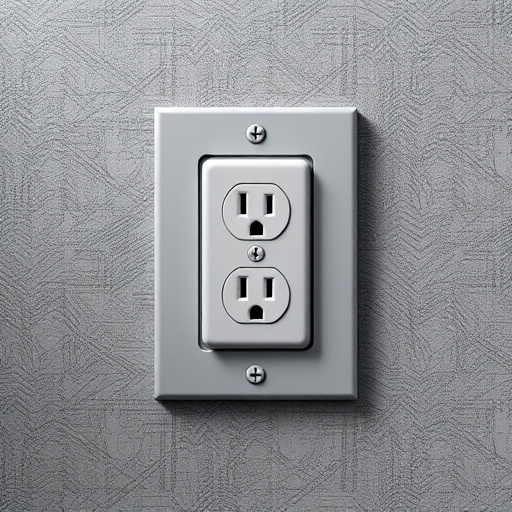Hidden wall safe outlets offer a discreet and innovative way to secure valuable items within homes or businesses, blending seamlessly into electrical infrastructure. These advanced solutions provide peace of mind by hiding important documents, precious metals, or firearms out of sight while maintaining an uncluttered aesthetic. With careful installation following safety standards like the International Fire Code, DIY enthusiasts can create a hidden storage space that ensures access during emergencies and safeguards against theft or damage.
In today’s digital era, home security has evolved beyond traditional locks. One innovative solution gaining traction is the hidden wall safe outlet—a discreet storage option seamlessly integrated into everyday electrical outlets. This article explores the world of hidden wall safes, delving into their design evolution, benefits, installation processes, and legal considerations. Discover how these versatile devices offer privacy, peace of mind, and a unique way to safeguard your valuables.
Understanding Hidden Wall Safes: A Discreet Storage Solution
In today’s world, home security has evolved beyond traditional safes and locks. One innovative solution gaining popularity is the hidden wall safe outlet—a discreet storage option that seamlessly blends into your home’s infrastructure. These outlets look just like any other electrical outlet but conceal a secure compartment for valuable items, offering peace of mind and added protection.
The beauty of hidden wall safes lies in their versatility and ease of installation. They can be discreetly fitted into various walls, including those behind furniture or within false panels, making them virtually invisible to the untrained eye. This makes them an ideal choice for storing important documents, precious metals, or even firearms, ensuring your belongings remain secure while maintaining a clean and uncluttered living space.
The Evolution of Electric Outlet Design: Incorporating Security Features
The evolution of electric outlet design has seen a shift from basic functionality to incorporating advanced security features, addressing growing concerns about home safety and security. Early outlets were primarily focused on providing power access points, but as technology advanced, so did the need for enhanced protection against potential hazards like electrical fires and accidental shocks. This led to the integration of safety mechanisms such as circuit breakers, ground fault circuit interrupters (GFCIs), and more recently, hidden wall safe outlet solutions.
Hidden wall safes, disguised as ordinary electrical outlets, offer a sleek and discrete way to secure valuable items or emergency supplies. These innovative designs blend form with function, allowing homeowners to protect their possessions without compromising aesthetics. By seamlessly integrating security into everyday outlets, these features ensure that even in the event of power outages or emergencies, users can access critical resources while maintaining a safe living environment.
Benefits of a Hidden Wall Safe Outlet: Privacy and Peace of Mind
A hidden wall safe outlet offers more than just a secure storage solution; it provides an unparalleled sense of privacy and peace of mind. By integrating a safe directly into an electrical outlet, you create an invisible safeguard for your valuable items, ensuring they remain out of sight and reach. This discreet approach is particularly appealing for those who value discretion and don’t want to disrupt the aesthetic of their living or working space with bulky safes.
The benefits extend beyond aesthetics. A hidden wall safe outlet allows you to keep important documents, small valuables, or even emergency supplies hidden from prying eyes, including burglars. This added layer of security can be especially reassuring for homeowners and businesses alike, providing a quiet confidence that comes from knowing your treasures are protected in plain sight.
Installation Process: Step-by-Step Guide for DIY Enthusiasts
Installation Process: Step-by-Step Guide for DIY Enthusiasts
Installing a hidden wall safe outlet is an excellent way to secure valuable items while maintaining a seamless appearance. For those comfortable with DIY projects, this guide will walk you through the process, ensuring your new safe addition is both functional and discreet. Begin by choosing a suitable location – consider spaces behind furniture or in less frequented areas for optimal security. Then, using a stud finder, locate and mark the position of existing wall studs to ensure a sturdy mounting surface.
Next, prepare the opening by cutting a hole slightly smaller than the safe outlet’s dimensions. Be careful and precise to avoid damaging the surrounding walls. Once the hole is ready, attach the safe outlet housing using screws, ensuring it aligns flush with the wall. After securing the housing, connect the wiring according to your electrical system’s instructions. Finally, test the outlet’s functionality and enjoy the peace of mind that comes with a securely hidden wall safe outlet.
Legal Considerations and Safety Standards for Built-in Safes
In many regions, installing a built-in safe, such as a hidden wall safe outlet, is subject to specific legal considerations and safety standards. These regulations are designed to ensure that these secure storage solutions meet certain criteria for fire resistance, impact protection, and electrical safety. For instance, in the United States, the International Fire Code (IFC) and local building codes dictate the dimensions, construction materials, and installation methods allowed for various types of safes. Compliance with these standards is crucial to prevent structural damage during emergencies and to safeguard individuals from potential hazards.
When integrating a hidden wall safe outlet, it’s essential to consult local authorities and certified safety professionals. They can provide guidance on the appropriate safe selection, placement (like secure mounting in solid walls), and electrical connections (ensuring low-voltage power supply for the lock mechanism). Adhering to these best practices not only guarantees compliance with legal requirements but also enhances overall security, making your valuable items safer from theft or damage.
